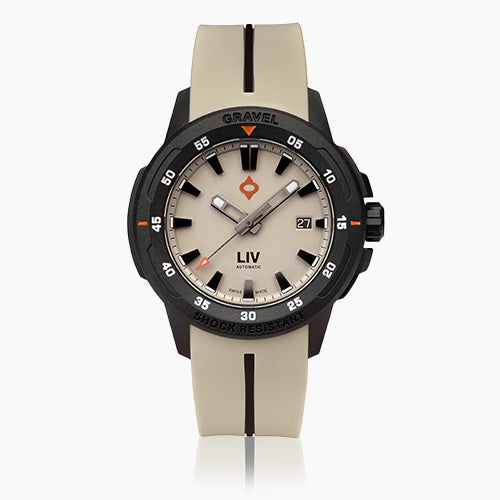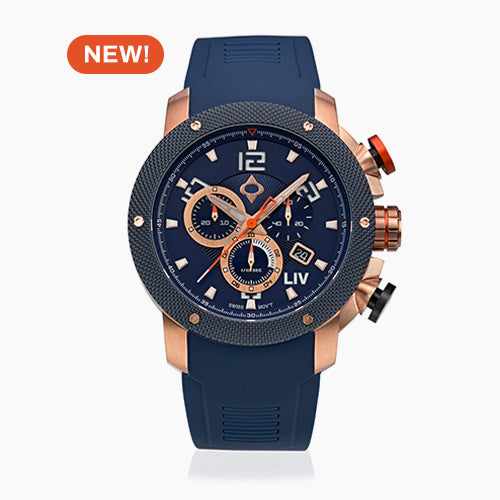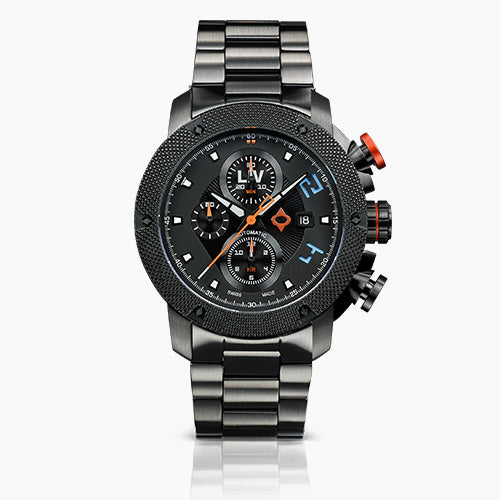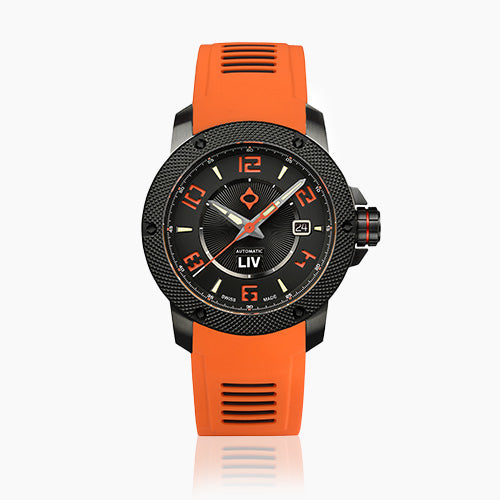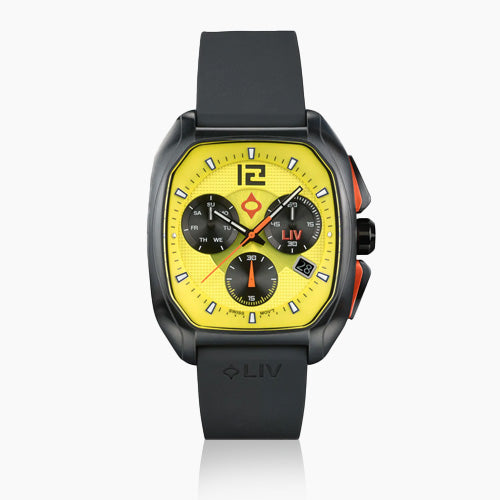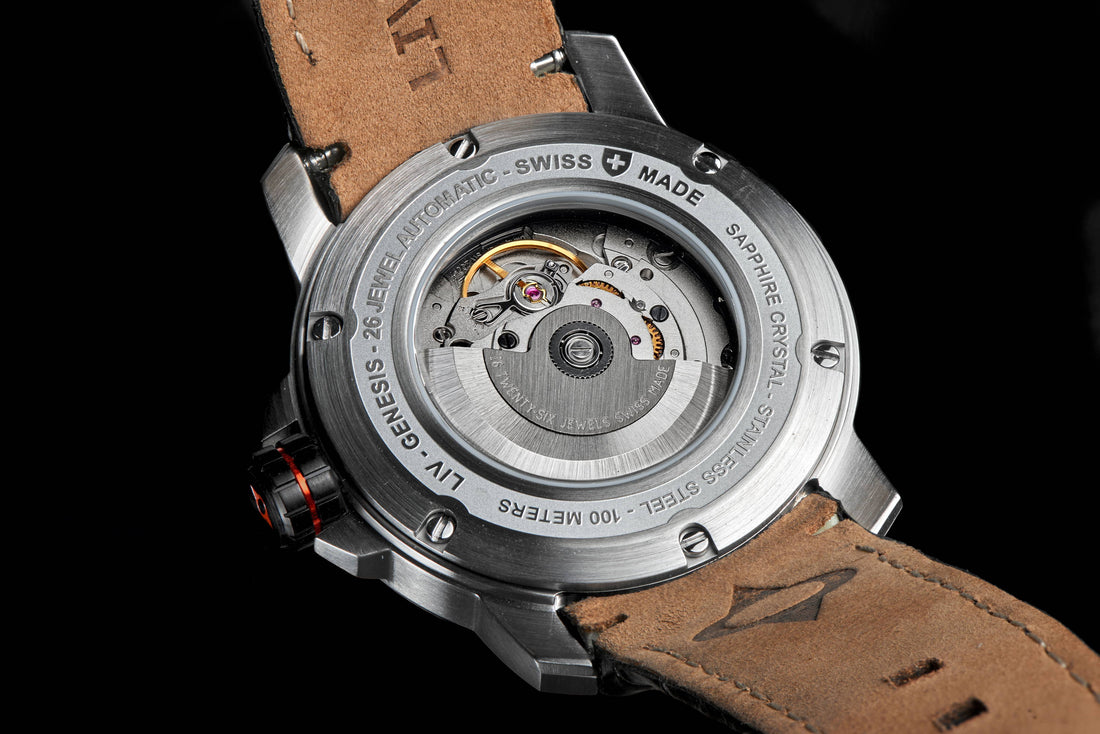
The Ultimate Guide to Automatic Watch Movements
Share
THE ULTIMATE GUIDE TO AUTOMATIC WATCH MOVEMENTS
Have you ever looked at your luxury watch and wondered how it works? What’s powering those tiny movements, and helping you stay on schedule? Watch movements, also known as calibers, are the power that runs the engine of a watch.
A caliber is the essential internal mechanism that makes the hands of the watch move. Calendars, dual time zones, and chronographs are all powered via tiny watch movements within the mechanism, too.
But when it comes to automatic watches, how do the calibers work? We’ll explore in more detail below in our ultimate guide to automatic watch movements.
WHAT IS AN AUTOMATIC WATCH MOVEMENT?
Watch manufacturers will create many different types of watch movements, often using proprietary mechanisms. However, watch movements fall into two main categories - mechanical and quartz watch movements.
One simple way to determine if a watch movement is quartz or mechanical has to do with the way the second-hand moves on the timepiece. Quartz watch movements will display a tick-tick movement, where the second-hand moves once per second. With a mechanical watch movement, the second hand will move in a fluid, sweeping fashion to indicate the seconds passing. Both quartz and auto-quartz movements require a battery to run and operate an internal electrical circuit.
Mechanical watch movements are further broken down into two categories - manual and automatic movements. Mechanical calibers are comprised of many tiny gears and springs inside of the timepiece. In general, a mechanical watch will be more expensive than a watch that runs on battery power, simply because mechanical watches require a more labor-intensive process to make. A battery-powered watch may be more accurate, but watch enthusiasts and connoisseurs prefer automatic or manual watches. These unique timepieces represent hundreds of years of precision, craftsmanship, and innovation within the watchmaking industry.
Automatic watch movements are also called “self-winding” watch movements. These calibers use the natural movements of the wearer’s wrist to power the timepiece. Automatic watches are comfortable to wear, use, and care for since they do not require daily winding to ensure the watch’s operation and accuracy. If the timepiece is worn every day, the owner will not have to wind the watch by-hand to keep it operational.
HOW DOES AN AUTOMATIC WATCH MOVEMENT WORK?
An automatic watch movement uses a rotor, or metal weight, to power the timepiece. The rotor will oscillate freely within the watch. Every time the wearer moves their wrist, the rotor spins. That intrinsic spinning motion is transferred into energy that winds the mainspring in the watch automatically. The mainspring is where power is stored.
Does an automatic watch still require winding? In some instances, yes. Watches with an automatic feature that are worn regularly will mostly power themselves. But if the owner doesn’t wear the watch for some time, they will need to wind it to power the internal mechanisms.
AUTOMATIC WATCH MOVEMENTS: A BRIEF HISTORY
Swiss watchmaker Abraham-Louis Perrelet is believed to have invented the first automatic watch movements in the 1770s. Perrelet invented mechanical watch devices that transferred the movement of the wearer into energy, powering the timepiece for up to eight hours a day. But it wasn’t until the French inventor, Hubert Sarton, created his automatic watch movement design in 1778 that these types of timepieces became popular with everyday wearers. Sarton published his designs in Paris and claimed that Perrelet was inspired by his automatic watch designs.
The public purchased and wore the first automatic watches in 1780. These watches weren’t the popular wristwatches that we all know today. Instead, they were pocket watches that were made by a different Abraham - Abraham-Louis Breguet. Breguet bought Abraham-Louis Perrelet’s designs but made a few changes. Unfortunately, these designs were not considered reliable, and European consumers stopped purchasing the watches around 1800. It wasn’t until WWI that advances in technology and watch manufacturing revived and refined the automatic watch movement.

AUTOMATIC WATCH MOVEMENTS: THE MODERN ERA
During WWI, pocket watches also fell out of favor, in exchange for convenient wristwatches that people still enjoy wearing today. The first generation of wristwatches made during WWI used automatic winding that was much more reliable than their Rococo ancestors. By placing the timepiece on the wearer’s wrist instead of their pocket, the energy was easily and efficiently transferred into the timepiece, powering the intricate mechanisms, and ensuring an accurate watch. John Harwood, a watch repairer from England, is the first person credited with inventing automatic wristwatch movements.
Harwood patented the automatic wristwatch in 1923. In 1928, Harwood began mass-producing these watches in a factory in Switzerland. This gave him the chance to market automatic watches to the public. When fully charged, these watches had power that could last for up to twelve hours.
While Harwood is responsible for the first mass-produced automatic watch, other watchmakers capitalized on his success. They began to improve upon his original designs. Rolex added additional weights to the timepiece, allowing it to capture even more energy when worn. The Rolex timepieces could be powered for up to 35 hours with the new proprietary designs.
In the late 1940s, Eterna Watch put ball bearings inside its automatic watches. This gave the internal components of the watch more controlled movements, allowing for a more accurate and precise timepiece. The watches were also marketed as more structurally sound and durable. What about automatic wristwatches today? The most popular watches with modern consumers use automatic movements, and only a few still employ manual winding.
WHAT ARE THE KEY COMPONENTS OF AUTOMATIC WATCH MOVEMENTS?
The mainspring is the power source of automatic watch movements. When the crown of an automatic watch is wound, kinetic energy is transferred to the coil mainspring. As more energy is stored, the mainspring becomes tighter and tighter, storing more energy for later use.
Crown
On the side of the watch is a small wheel, called a crown. The crown is turned, which winds the watch and enables it to run.
Gear Train
The energy stored within the mainspring is allowed to pass through the gear train, which is a small series of internal gears that make the watch hands and other parts of the watch face move.
Escapement
The escapement is like an internal braking system within the timepiece. The energy that’s transferred from the mainspring to the gear train is expelled in equal parts, called escapement.
Balance Wheel
The balance wheel is an internal component that beats in a circular motion, at five to ten times per second.
Dial Train
The dial train is another series of gears similar to the gear train. The dial train transfers equal parts of energy from the balance wheel into the watch hands, enabling the hands to move.
Jewels
Jewels are synthetic rubies that are put in the center of a gear to keep it in continuous motion and prevent wear-and-tear from heat and friction.
Rotor
The rotor is a metal weight that looks like a half-circle. The rotor is attached to the movement and can swing freely as the wearer’s wrist moves. As the wearer moves and thus, moves the rotor, the rotor transfers power to the mainspring and twists it, where the energy is then stored. When the mainspring is fully wound, a clutch attached to the rotor is engaged. The clutch prevents the rotor from winding the mainspring further.
IMPORTANT METRICS USED TO MEASURE THE QUALITY OF AUTOMATIC MOVEMENT
Automatic watches are exceptional inventions that have stood the test of time. When purchasing an automatic watch, many important metrics are used to measure the quality of the timepiece’s movements.
Accuracy
How accurate an automatic watch needs to be will differ between different sets of wearers. Some people will need their watches to be extremely accurate. For example, professional divers or military personnel may require the most accurate watches, called chronometer watches. For those who care more about style and convenience, a standard automatic watch will be +-25 seconds per day.
This is a general rule of thumb regarding automatic watch accuracy. It means that an automatic watch should only gain or lose up to 25 seconds between two days. If a watch is gaining or losing more than 25 seconds in two days, then something is wrong with the timepiece, and it needs servicing.
BHP
BHP refers to beats, or ticks, per hour. Sometimes, watchmakers will use the terms beats per second or Hz. Most watches have a rate of six, eight, or ten beats per second, measured out as 21,600, 28,800, or 36,000 BPH, respectively. High-beat watches have a faster ticking movement. They are more accurate and precise since they read out smaller fractions of a second. The second-hand movements on a high beat watch will also appear smoother.
Power Reserve
Fully wound automatic watches will have up to 42 hours of energy stored before they need to be powered again. In some automatic watch designs, they may house up to ten days' worth of power reserves.
Complications
Complications refer to functions on a watch that does something other than telling time. On many automatic watch designs, the timepiece may display the calendar date, moon phases, power reserve indicators, and also allow for alarm functions.
Reliability
Automatic watches are reliable watch designs and are manufactured to be precise and accurate. Certain features can increase the timepiece’s reliability and accuracy, such as having a higher BPH.
Materials
Automatic watches typically have glass in the back so you can view the movement. Well-made movements make the time reliable, while poorly manufactured movements will have ticks that are inconsistently measured. Watches made with inferior materials can lose minutes in a day. Watches from Swiss, Japanese, and German movement makers are renowned for using the highest-quality materials for accuracy, precision, and reliability.
MAINTENANCE AND UPKEEP
There will come a time when you may have to wind your automatic watch. In general, though, wearing an automatic watch regularly is one of the easiest ways to care for it.

These types of watches do best when they are continuously worn. If the watch has stopped from lack of wear, gently shake it with the dial facing up until the hands start moving again. Or, put it on and move your wrist a few times. When the hands start moving, you can set the date and time.
Always keep the watch dry and clean. Use a soft cloth to wipe the face every night and avoid showering or bathing while wearing the watch. While a watch may be waterproof, watches typically can't endure high water temperatures. The gaskets within the mechanism can expand and contract, reducing the timepiece’s lifespan and accuracy.

Normal wear-and-tear happens to even the most well-maintained watches. To keep your automatic watch accurate and beautiful, it will need professional servicing every three to five years..
AUTOMATIC WATCH MOVEMENT FAQS
Are you in the market for a new automatic watch, or have been gifted one? You may have a few questions about these unique timepieces. Below are the most frequently asked questions our customers have about automatic watches.
Can an automatic watch last a lifetime?
Yes, with care and regular maintenance, a well-designed automatic watch from the finest craftsman can last a lifetime.
What can cause automatic movements to malfunction?
Dropping an automatic watch can break the delicate internal mechanisms, causing it to malfunction. Frequent wear of an automatic watch without regular service maintenance can also lead to abnormal wear-and-tear, and prevent the watch from working correctly.
What are jewels?
Jewels are used in place of bearings to decrease wear-and-tear on the internal movements of the watch. Made out of synthetic rubies, jewels are typically placed within the gears to reduce friction and absorb heat. These mechanisms also improve the watch’s accuracy and performance. Why rubies? Rubies are ideal for absorbing heat caused by the gear movements, and they are hard gems that can adequately withstand friction.
How do you wind an automatic watch?
There are several ways to wind an automatic watch. You can turn the crown. You can put the watch on and gently move your wrist a few times to power the mainspring. Or you can hold the watch face up and gently shake it a few times to power the watch movements.
Are kinetic and automatic watch movements the same thing?
Technically, no. Kinetic watch and automatic watch movements differ in fundamental ways. An automatic watch uses a rotor to convert motion to energy that’s stored in the mainspring. With a kinetic watch, movement is transferred into electrical power and stored in a battery.
Automatic Watch Movements: A Takeaway Message
The watch movements or calibers are the power behind all time-keeping functions within your watch. These intricate and precise movements are critical to ensuring the timepiece is accurate. Without these internal watch movements, the timepiece wouldn’t work. While most watches are purchased based on their aesthetics, those with an attention to detail and appreciation for craftsmanship and precision will enjoy knowing exactly how the watch works inside. With professional care and service, your beautiful automatic watch can last a lifetime.

About the Author
Esti Chazanow, Co-Founder at LIV Watches
Esti's passion for men's watches led her to co-found LIV Watches—a microbrand dedicated to connecting watch collectors with high quality, limited edition, Swiss Made timepieces at prices they can afford—and the rest is horological history.




